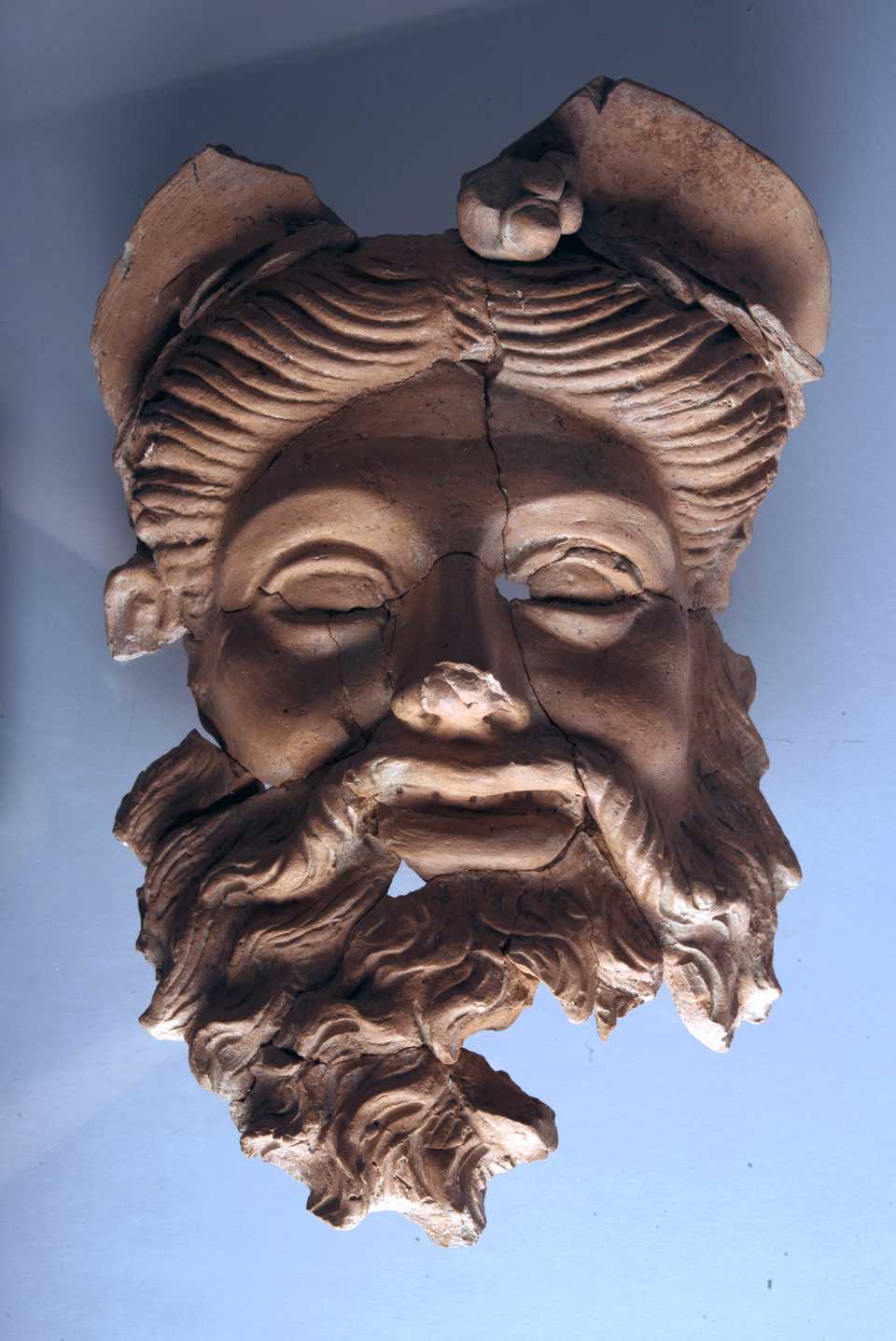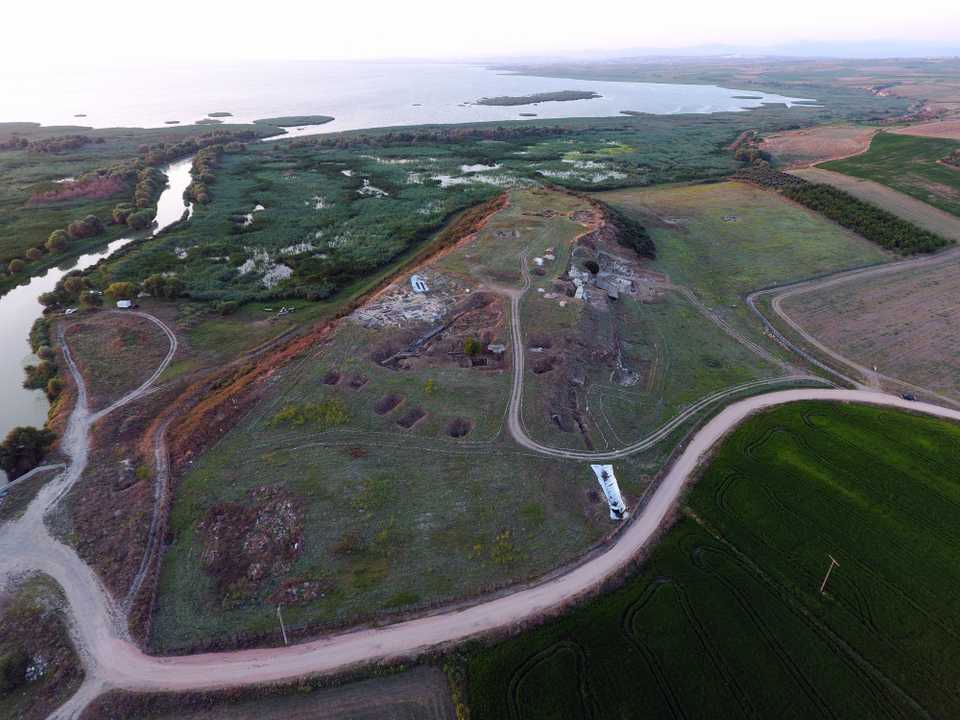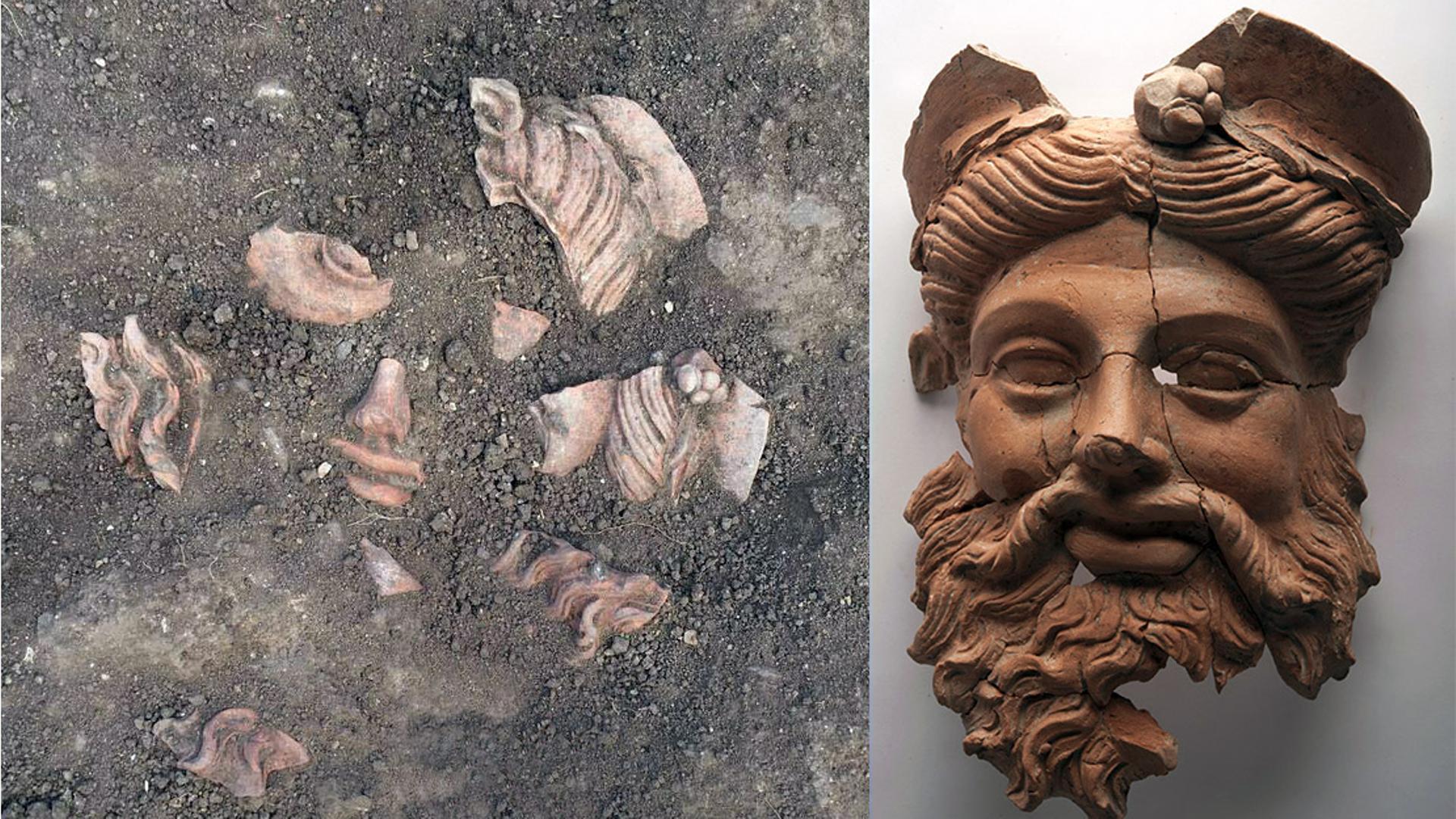The site where the discovery was made is within the western Anatolian province of Balikesir. TRT World spoke with Kaan Iren of Mugla Sitki Kocman University, who is the director of the archeological excavation at Daskyleion antique city. He tells us about the findings at Daskyleion, from a mask of Dionysus to skeletons of little mice.
The terracotta mask, presumably of the Greek god Dionysus (later known as Bacchus to Romans), was found recently, but Iren warns of interpreting results without a thorough examination: “The mask belongs presumably to the end of the 4th century BCE. However, we should not forget –– all the information on the mask is in a kind of preliminary report. The mask will be studied later more intensively by the archaeologists.”
Asked about the function of the terracotta mask, Iren offers that it is “probably an ex voto (votive offering) and was probably offered during a ritual to the god Dionysus for a better vintage.”

“Daskyleion is at the southeast of Manyas Lake and close to Egili which is a quarter of Bandırma,” Iren says. It was “a multicultural city. Mysians, Phrygians, Lydians and Persians were living peacefully together in this city.”
The mask was found on the Acrodaskyleion (the upper city) during the excavations of a Lydian building, Iren comments. “However, it is later than Lydians. Unfortunately, it was found out of context, that’s why many questions remain unanswered,” he writes.
“Nevertheless, if it was really a mask of Dionysus, we may assume that the cult of this god existed in Daskyleion, although Daskyleion was not a Greek city before the Hellenistic Period. [The mask] was mostly broken, 40 cm under the surface of the earth. Our restorer fixed it perfectly.”
The excavations at Daskyleion are directed by a team of Mugla Sitki Kocman University, are permitted and under the surveillance of the Ministry of the Culture and Tourism, and covered financially by the two institutions and Municipalities of Balıkesir and Bandırma.

According to Iren, the earliest finds “go back to the 3rd Millennium BCE. The peak time of the city was, when it became a satrapal (administrative) centre of the Persian Empire in 546 BCE. After the arrival of the Macedonians under the leadership of Alexander the Great (334 BCE), the city started to be ‘Hellenized’. The archaeologists are unearthing every season a lot of interesting artefacts of those different ethnicities.”
Iren also tells a curious tale of historical remnants of small rodents: “The funniest thing for us, this year, was that we found the bones and skulls of small mice during the excavations of a Lydian kitchen and magazine from the first half of the 6th century BCE. Few days later we found, alive, a small pretty mouse in the same trench, which was probably one of the descendants of his Lydian elders.”










Discussion about this post